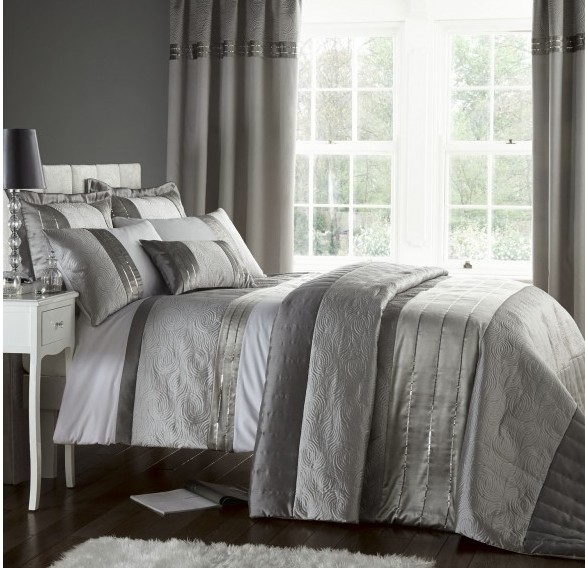Decorating a bedroom is not a difficult thing to do – but it is a difficult thing to do well. There are a huge number of potential pitfalls which can prevent the room from becoming the relaxing space that every bedroom should aspire to be.
The premise of creating a bedroom sounds simple enough; you must decide upon an aesthetic theme which matches your personality and select items to fit within that theme. Some of these items are more important than others and contribute more greatly to the room’s overall look. Let’s consider them.
Bedding
When selecting a bed, it’s usually best to go for the largest possible bed your room (and your budget) can accommodate. Leaving to one side the more practical merits of a larger bed, you should also consider the impact it might have on the overall look of the bedroom. After all, there is little point in investing in a super-king sized bed if it leaves barely any room to walk around the room. A bed which is too big for the room can often look ridiculous, while a smaller one can look lost. Go for one which straddles the happy medium between these extremes.
Once you’ve decided on the proper size for your bed, you should also consider the colours, material and style of the sheets. The colour of the bed will depend upon personal taste, but more reserved, pale colours are often more relaxing – trying to lie down and read a book in a bright scarlet room is more difficult than doing so in a pale grey-blue one.
The quality of the fabric used to make a quilt cover is measured in terms of the number of stiches present per square inch. Higher values mean finer stitching – up to around a thousand per square inch or higher. Choosing a higher quality of quilt-cover can have a big impact not only on the overall feel of the bed, but on the way it looks, too.
Curtains
The size, shape and colour of your curtains will hugely impact the overall look of the room. As light enters through the window, curtains will influence the way that it spreads around the room. The eye will also naturally be drawn toward the curtains in much the same way that it is naturally drawn toward the bed; after all, a decent-sized set of curtains will encompass a large amount of wall space.
Experts recommend that we prepare for sleep with around half-an-hour of semi-darkness before we finally retire for the night and that we awaken to morning light. This helps us to develop a strong, healthy body-clock. While we sleep, it is best to have the room as dark as possible.
For these reasons, a set of decent blackout curtains can prove extremely useful. They will help you to get the best possible quality of sleep without having to contend with the dawn getting you up early. If you live in an area where there is a lot of street-lighting outside, then investing in blackout curtains is a no-brainer. The difference it will make in the quality of your sleep will likely make it well worth the extra expenditure.
Cushions
 Generally speaking, a bed’s pillows should be chosen to match the quilt. Sure enough, matching pillowcases are often sold together with quilt covers in order that an exact match can be achieved. Smaller, decorative scatter cushions can also be used to add some variety and break up an expanse of fabric with some different, contrasting colours. If you’re feeling particularly extravagant, there are some cushions available which come embedded with precious stones – such cushions can elevate an already extravagant bedroom into opulence.
Generally speaking, a bed’s pillows should be chosen to match the quilt. Sure enough, matching pillowcases are often sold together with quilt covers in order that an exact match can be achieved. Smaller, decorative scatter cushions can also be used to add some variety and break up an expanse of fabric with some different, contrasting colours. If you’re feeling particularly extravagant, there are some cushions available which come embedded with precious stones – such cushions can elevate an already extravagant bedroom into opulence.
Other items
Of course, any bedroom would look distinctly uninviting were it not for the addition of the other, minor touches which lend the room a personal touch. These might come in the form of ornaments on the bedside tables, rugs for the floor and pictures to hang on the walls. The walls themselves, too, will have a huge bearing on the look of the room – whether you choose to paint the walls or paper them.
Selecting wallpaper is often tricky. Your choice will depend on personal preference, but also on the dimensions of the room itself. If you go a large-design wallpaper in a smaller room, the effect will probably be claustrophobic. If you do the opposite and put a smaller pattern in a large space, the pattern is likely to be almost invisible.





